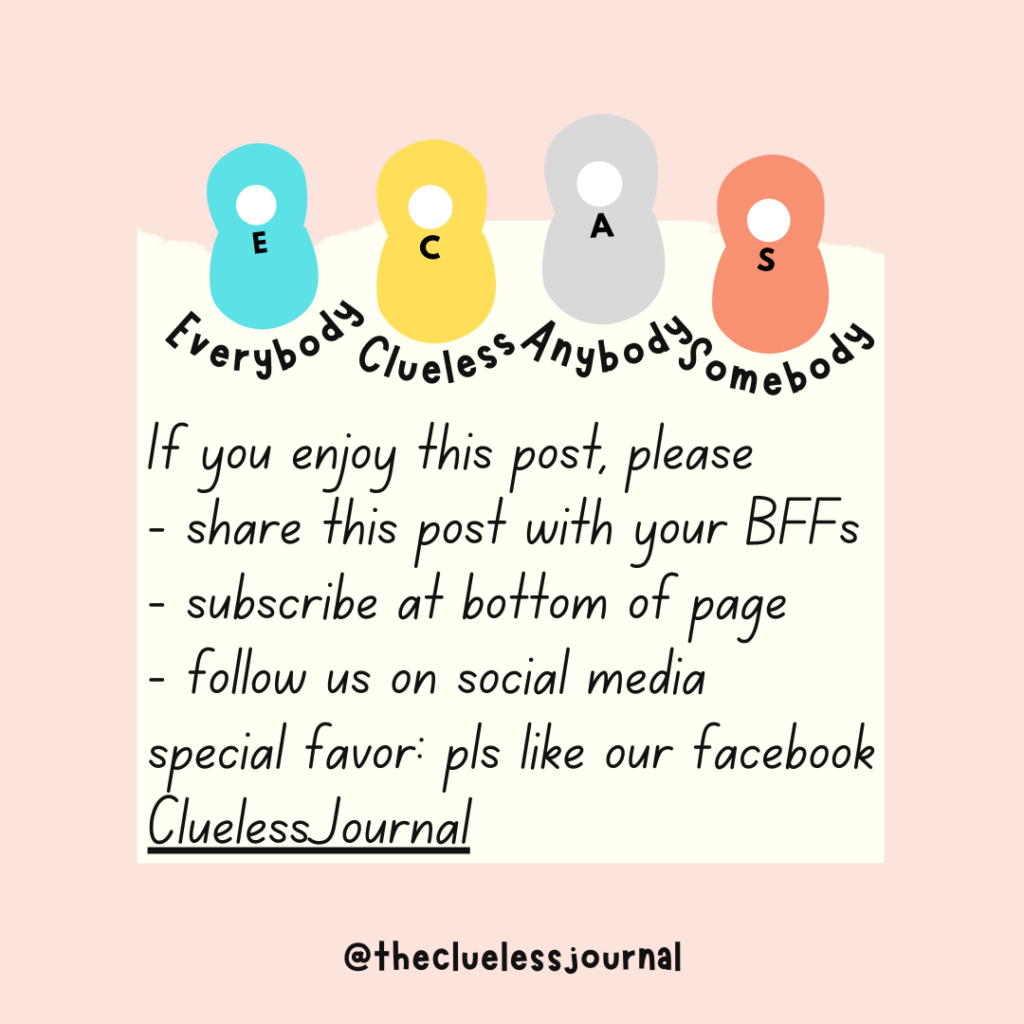You know what they say about outer beauty is only skin deep, it’s the inner beauty that matters?
BULLET JOURNAL SPREADS fall into this category. While there is nothing wrong with a beautiful journal spread, it is the intention behind it that matters.
Let’s say you feel kind of stuck and thought, ‘Hey, everyone is bullet journaling, let’s do some retail therapy, get some journaling supplies and then start on our journal to be unstuck!’
Next, you’ve got all your supplies, spent quite a bit of money, feeling good and start googling journaling spreads. You will likely find something like this:

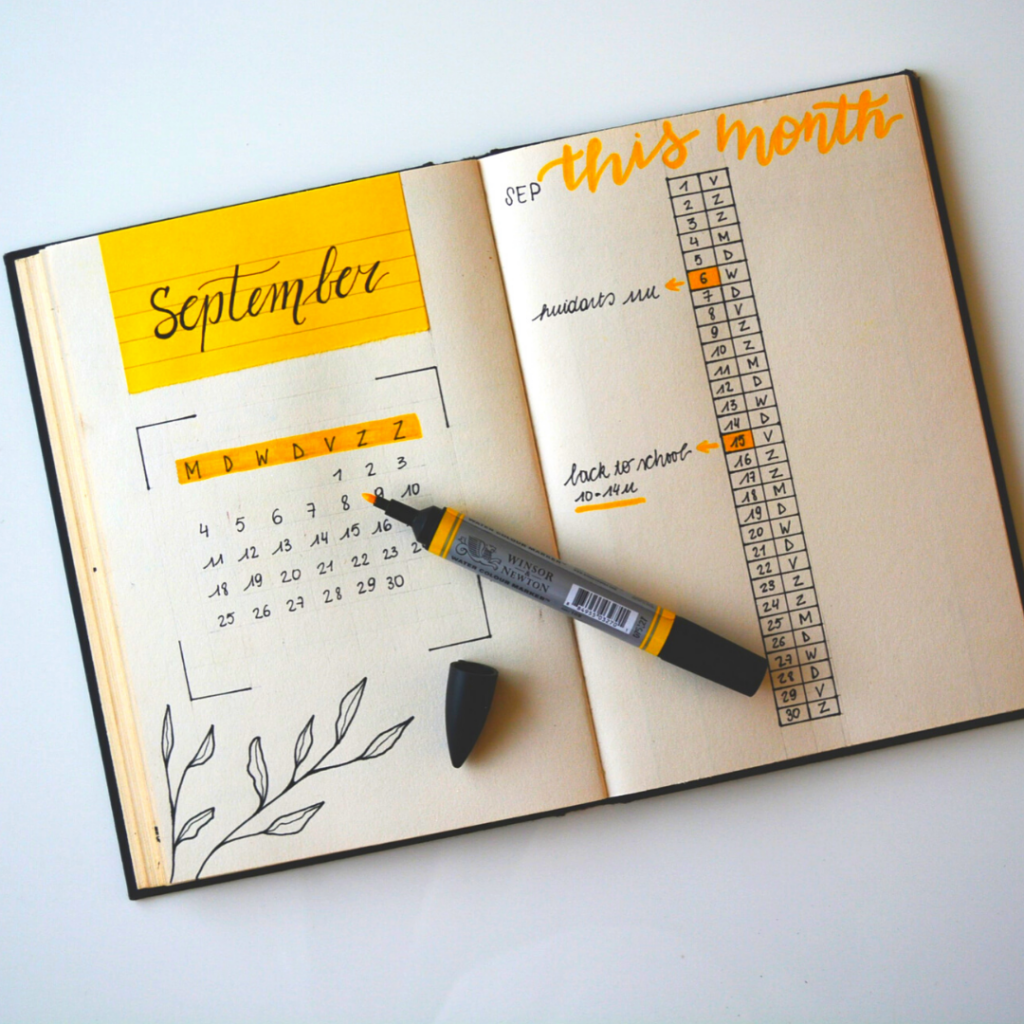
Bullet Journal – Top mistakes not to make
There are likely two scenarios from here:
- You get overwhelmed. 😲 Because seriously guys, how can anyone do up such beautiful journaling spreads overnight?
- You get hyper-excited 😍, discover your artistic side but soon find yourself journaling for Instagram likes.
p.s. You may also end up with a side hustle doing collaborations with brands or even create your own journaling business!
Before we go on, as this post is over 3000 words, here’s the content page for this post 😁
- 5 Ways How Not to Bullet Journal
- What is Bullet Journal Method according to its creator Ryder Carroll
- The Intention behind Bullet Journaling
- The Mindfulness in Bullet Journaling
- How the Bullet Journal is used for Mindfulness
- The Bullet Journal System
- Books about Journaling
- Journaling Notebooks
- Journaling Supplies
- The Clueless Journal Gang needs help!
- References
I get commissions for purchases made through links in this post.
5 Ways How Not to Bullet Journal
- Doing beautiful journaling spreads to share on Instagram and not really using your spread. How do you know if creating beautiful spreads is your better life or just a distraction from it? If you no longer find joy doing it and it feels more and more like a chore, you should stop.
- I made this mistake. Somehow when I read The Bullet Journal Method and a couple of other journaling books in 2019, I totally missed the intention. Instead, my bullet journal becomes like a mega-checklist.
I got to the point when I keep tracking things and then migrating them.
BUT it got downright pointless when you just keep checking off the same things you always do and still not doing what you want to do.
It is crazy to keep doing the same things and expecting change. It is even CRAZIER to do so and create a bullet journal around it. Talking about the next level crazy!
Mei, the clueless mom

Avoid Rubbish-in for your Bullet Journal
- Using your Bullet Journal for tracking things that don’t matter. Can I add a PERIOD to this? If you search bullet journal on Instagram, you will find that journalers track lots of stuff. It is absolutely fantastic if doing a beautiful tracker spread is giving you joy or helping you improve your life. But let’s face it, certain things are not worth tracking:
- Things that are better tracked in an app. Think calories, time spent on tasks or daily expenses.
- The results of tracking, no matter how accurately captured, will not create your better life.
- Tracking will reinforce your negative thoughts, not positive ones.
My guiding principle is not to track something in my bullet journal if the time spent doing so is not justified.
- Not learning from your bullet journal. The intention behind bullet journaling is mindfulness; it has everything to do with discovering more about yourself, what you want and being focused in making that happen. If you don’t learn from your bullet journal, you will be wasting that opportunity to create your better life.
Imagine looking through your 15 bullet journals and discovering that you are writing the same thing over & over again.
Mei
- Held captive by your bullet journal. What do I mean by that? Being somewhat prone to repetitive thinking, I can see the danger that bullet journaling becomes a mindless habit OR a system for reinforcing what doesn’t work. For instance, you may be creating monthly spreads and habit trackers out of habit!. But you don’t get anything out of doing so. Or you record notes in your day journal and all of them are largely negative. In other words, you’ve gotten into the habit of making notes that DON’T create positive change.
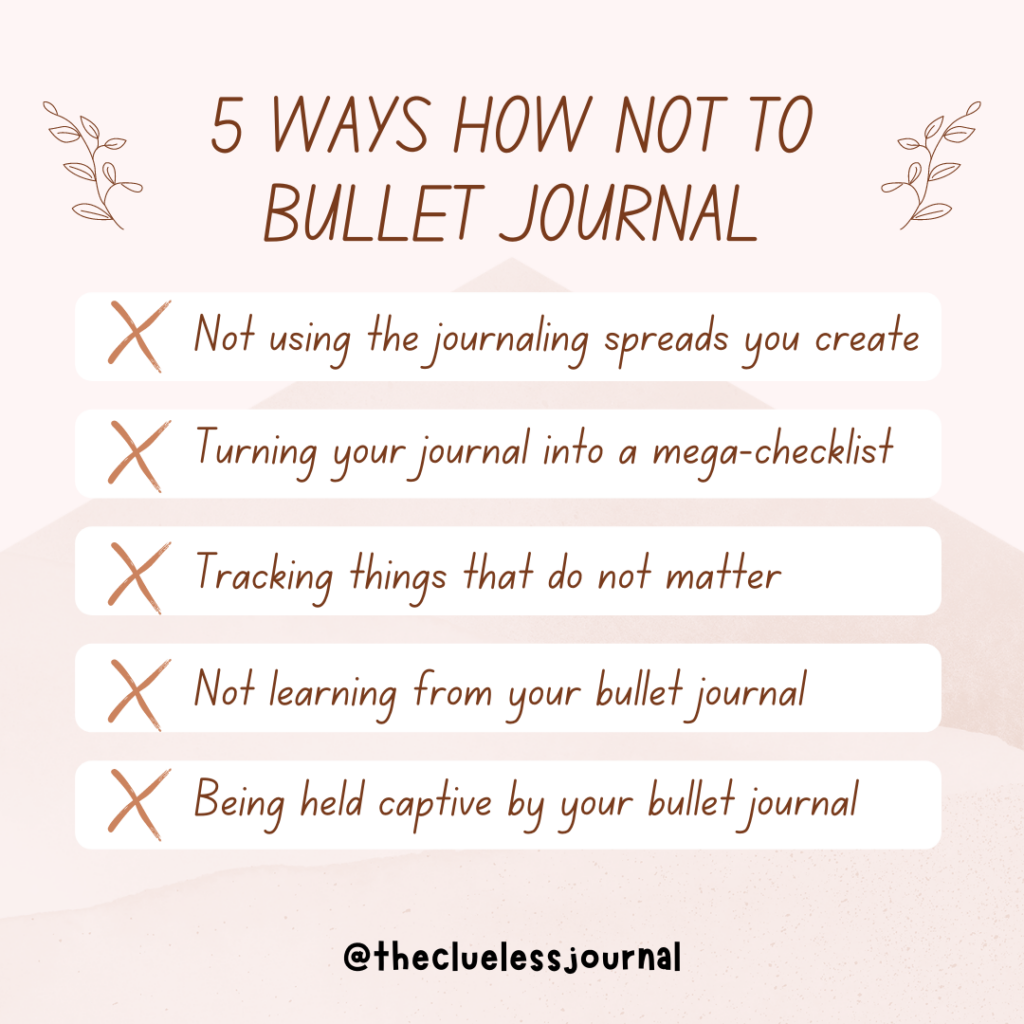
What is Bullet Journal Method according to its creator Ryder Carroll
Bullet journaling is about INTENTIONALITY. The intention behind bullet journaling gets a bit lost among the beautiful journaling spreads you see. I would suggest reading the book The Bullet Journal Method and what I’m sharing with you is what I get out from reading the book – Cover to cover, twice.
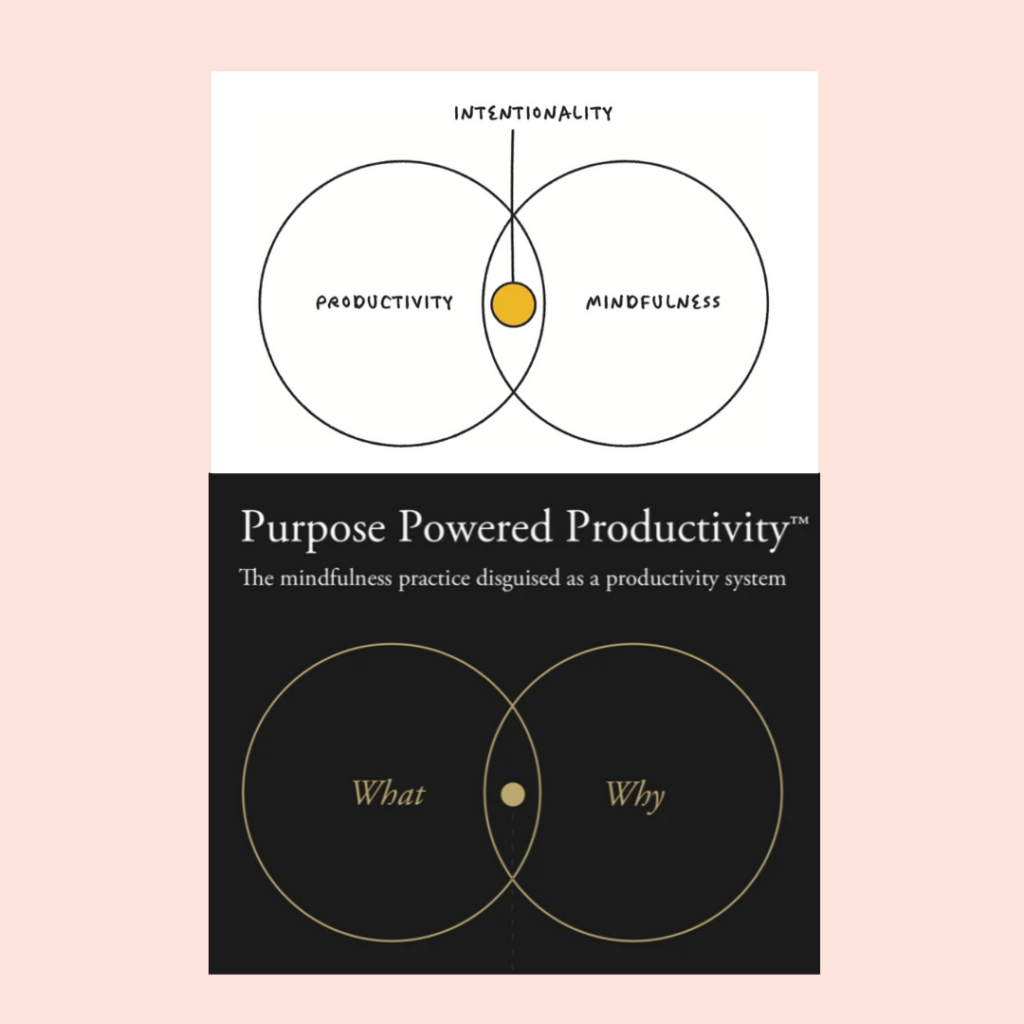
The INTENTION behind Bullet Journaling
Bullet journaling is about becoming more aware of who you are, what you want and why you are doing what you are doing. It’s Mindfulness. While the bullet journal system is created for increased focus and productivity, the heart of it is creating a better life.
p.s. this is my take from reading the book, please check out the bullet journal website and the book.
The MINDFULNESS in Bullet Journaling
I’m going to try something different. Most blog posts that you read about bullet journaling are going to tell you about the system. That is how you create the index, journal logs and the migration system.
I want to start with mindfulness.
If for no other reason, because I’m all about uncovering the clues for your better life. Not about how to be super productive or get things done, because friends, remember:
You can be super-productive at something that’s totally not you.
You can be super-productive at something that’s totally not you
Mei
Your Mindfulness in Bullet Journal
Reflections in your Bullet Journal
In the corporate world, we know things like de-brief and in your personal life, you know end of year review (and the darn new year resolutions). We are familiar with reflections, even kiddo has to write reflections if she behaved badly in school (thankfully, she didn’t 😎).
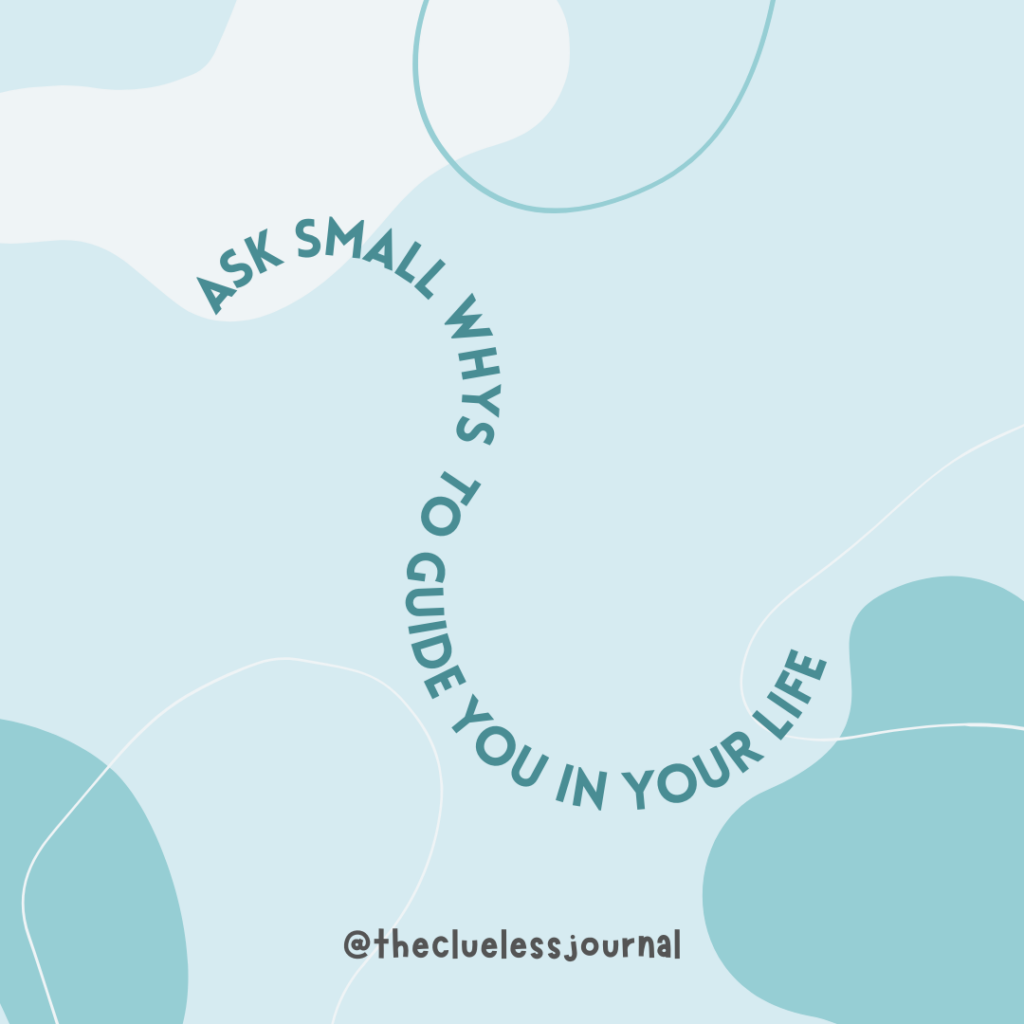
‘Fact’: We know reflections.
Problem: We tend to do the super big reflections and missed the insights from daily living. The bullet journal system is built to help you to Ask Small Whys.
The how 1: From the monthly log, you migrate the open tasks of the month to the following month. The reflection comes from asking yourself:
Do I still want to do this task?
If I want to, why didn’t I find time to do it?
Why is this important to me?
Be mindful about why certain tasks didn’t get done. Not ‘easy’ reasons like we’re super busy (or lazy!) but really asking why we didn’t do something that we bothered to note as a task. Is it because it has become irrelevant in our life? Or in my world, I would ask:
Is it no longer fun to me or bringing me joy?
The How 2: When you look through your day log and see the tasks that you have done, you can reflect on how you feel about the day activities.
The How 3: Goals collection is also a place where you can reflect. Some of the questions written in the book are:
What am I learning about my strengths and weaknesses?
What’s working and what’s not?
What value was added to my life?

What you may miss when setting goals in your Bullet Journal
So here’s the other thing that we often missed when setting goals.
We are so focused on the What & How, that we forget to ask the WHY. Why do we even want this goal? For instance you can ask Why did I do so well in this community-building task? (maybe ‘cos you love connecting with other women!) Or Why did I fail? (maybe you were half-hearted). Should you strike off this task?
If you are passionate about something, your creativity around it will lead you to the solution
Mei
Curiosity
The seed of passion is curiosity, the seed of perseverance is patience
notes I took from The Bullet Journal Method
Being curious is a quote that I drew in my journal.
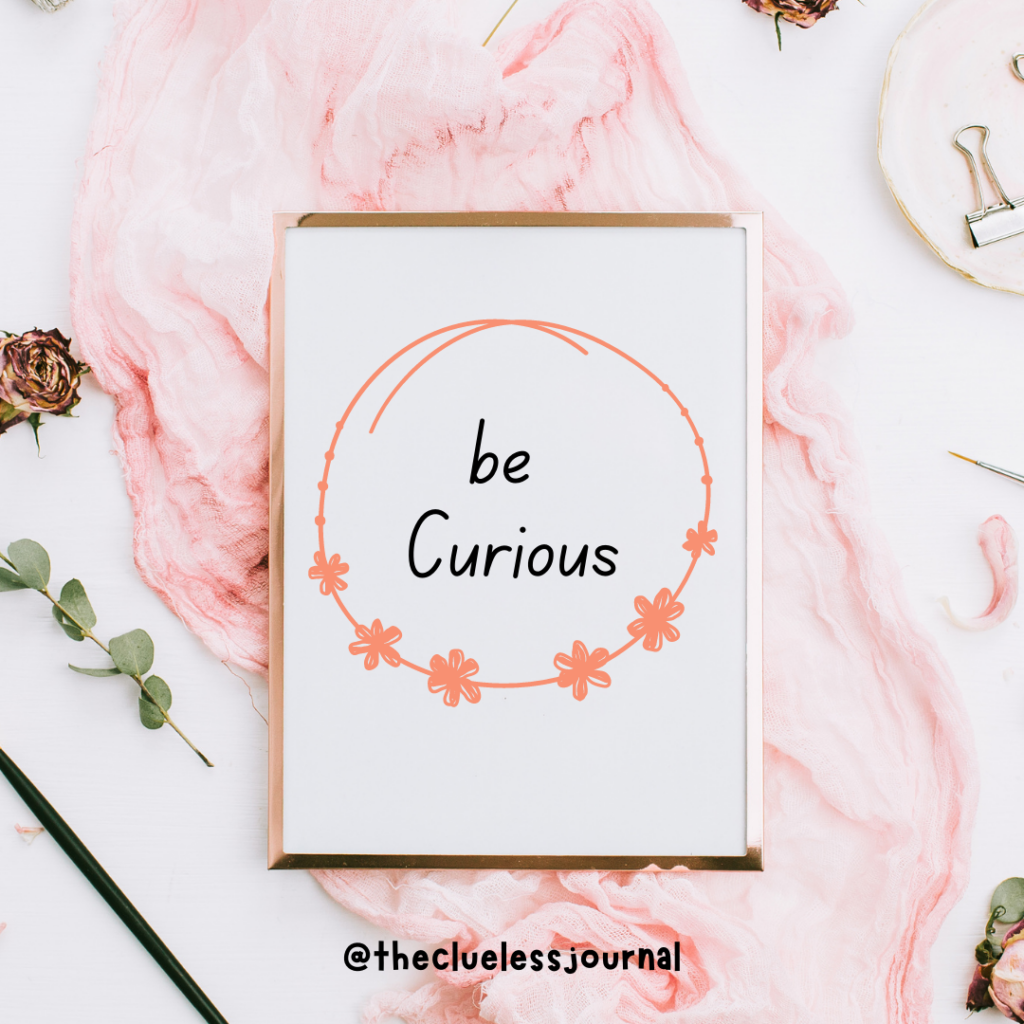
I first read how this can help us figure out our life in the book Design your Life. Being curious is a big part of design thinking and I want to dig deeper as to how journaling can help you to make use of your curiosity.
Rapid logging – this is noting down whatever comes to your mind and I think it is great to use this for nurturing your curiosity. I prefer to write everything I am curious about under a collection called Learning.
For instance, I come across many journalers using a Cricut machine and I would journal under my Learning collection.
- What is a Cricut machine? Looks super interesting and maybe I can use it to make my own stickers!
- What is this embossing pen and powder to turn brush lettering into gold letters?? Maybe I should get one.
Btw, these products look like this 👇🏼
If you dig deeper into what you’re curious about, you may even find that chance to build your business/ new (better!) life around that tiny spark of curiosity!
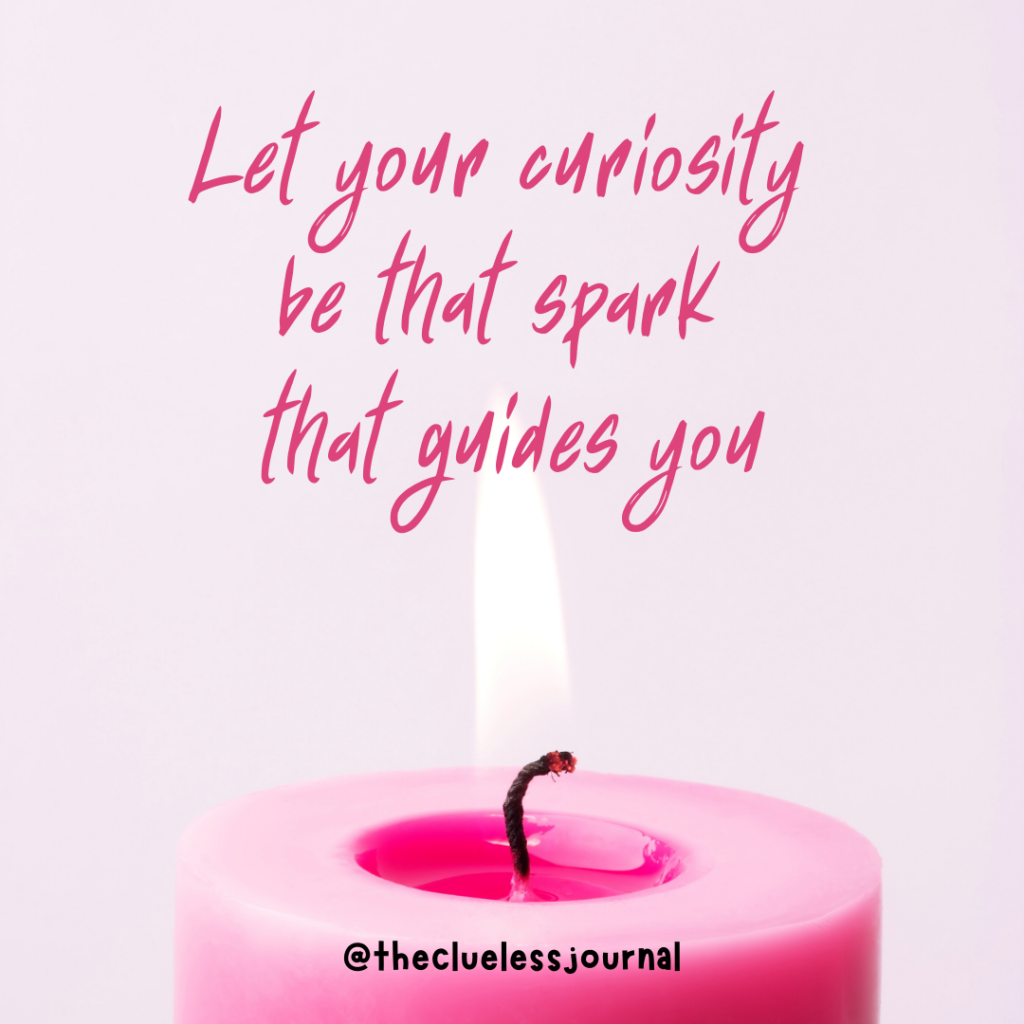
Perseverance
While it’s not covered in the book as a separate section, I believe that journaling can help us persevere.
Reflections notes – You may be writing down stuff like you’re getting the hang of it and did what you never imagined you could do. When you feel down, you can refer to your reflections and use them as motivation.
Use your journal as motivation
Mei
Gratitude in Bullet Journal
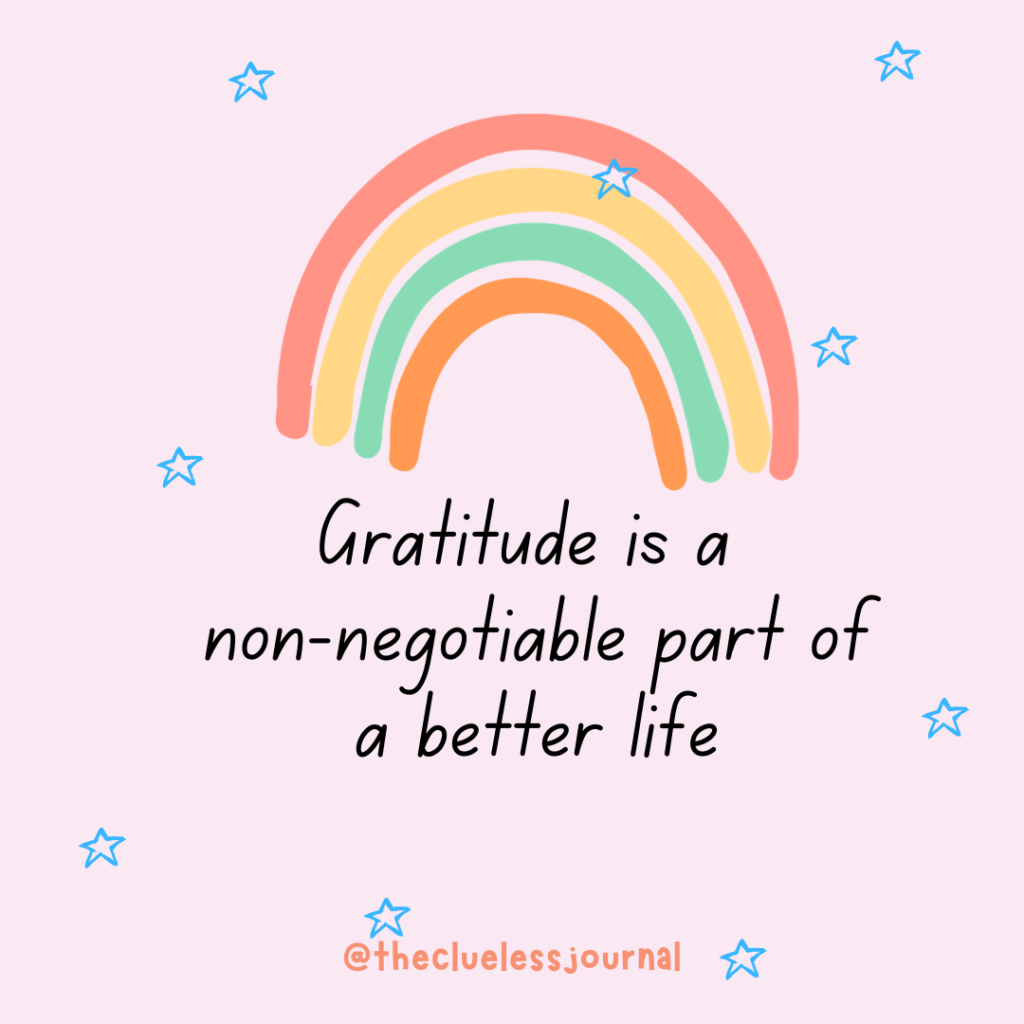
If you haven’t gratitude journal, you owe it to yourself to give it a go. Gratitude journaling can be done either within:
- Reflections at the end of the day
- Gratitude collection
Here’s how mindfulness comes in.
Instead of journaling in your day log ‘It’s done’, dig a bit deeper. For instance, ‘I’m super proud of myself, this task used to take me a full day, now I’ve not only done it in half a day but I did double the work‘ OR ‘I’m glad it’s over, felt like sh*t when doing it.’
See the difference?
Over time, if your tasks all felt like sh*t, then it is a BIG CLUE that it’s not part of your better life.
Ryder also suggested in the book not to repeat the things that you have listed before in your Gratitude collection, so that you will ‘find more chances to be grateful in the moment‘.
Deconstruction
The Bullet Journal Method book also mentioned the Five Whys, a technique developed by Sakichi Toyoda, the founder of Toyota Industries.
You can read up more of this (lots of articles on Google) but the main idea is starting with a broad question, perhaps Why did this Goal not progress? Then quickly ask more whys to uncover more. You can then choose one of the reason and figure out how to solve it. Let’s look at a tongue-in-cheek example:
Why #1: Why did I gain weight?
Because I ate too much ice cream and cake.
Why #2: Why did I eat too much ice cream and cake?
Because there’s a new bakery and new ice cream store which both opened just a block away.
Oh sorry, wrong answer. It’s wrong because we do not want to be asking the bakery and ice cream owner why they opened a block away!
Because I couldn’t resist the temptations.
Why #3: Why couldn’t I resist?
I am super stressed lately and needed some indulgence
Why #4: Why am I super stressed?
Because I try to do too much within too short a time
Why #5: Why do I want to try so hard?
Because _________________.
Other Mindfulness mentioned in Bullet Journal Method
There are other mindfulness methods mentioned in the book, such as Control, Radiance, Self-Compassion, Inertia, Imperfection. As I’ve tweeted Ryder, there’s plenty of mindset stuff in his book that’s super good.
The Bullet Journal System
Rapid Logging
This is to note down things to do or thoughts, without taking too much time AND still makes sense when you refer to it end of the day. Rapid logging is the main way of writing in your bullet journal.
Let’s try this. For example, I ate a cake and I want to remember that this cake was YUMMY and to find its recipe. In the day log, it can look like:
⚪ Ate cheese cream carrot cake from new bakery downstairs.
– Tasted heavenly, moist, cheesy and crunchy for the nuts. Have to find recipe.
This log records the time (because it’s in the day log), place, what and why I bother to journal it. And a to-do task which I can transfer to either a future log at the end of the day or assign it to tomorrow’s day log.
Daily Log
This is simply starting the page with writing the date and the day of the week. Record tasks, events and any rapid logging during the day.
Indexing
Number the pages of your bullet journal and create a content page. You can write the page numbers or use journals that come pre-numbered. Check out the journaling notebooks.
But more than a contents page, the index is meant to be a SNAPSHOT of what you care about. You see at a glance where your energy is spent on.
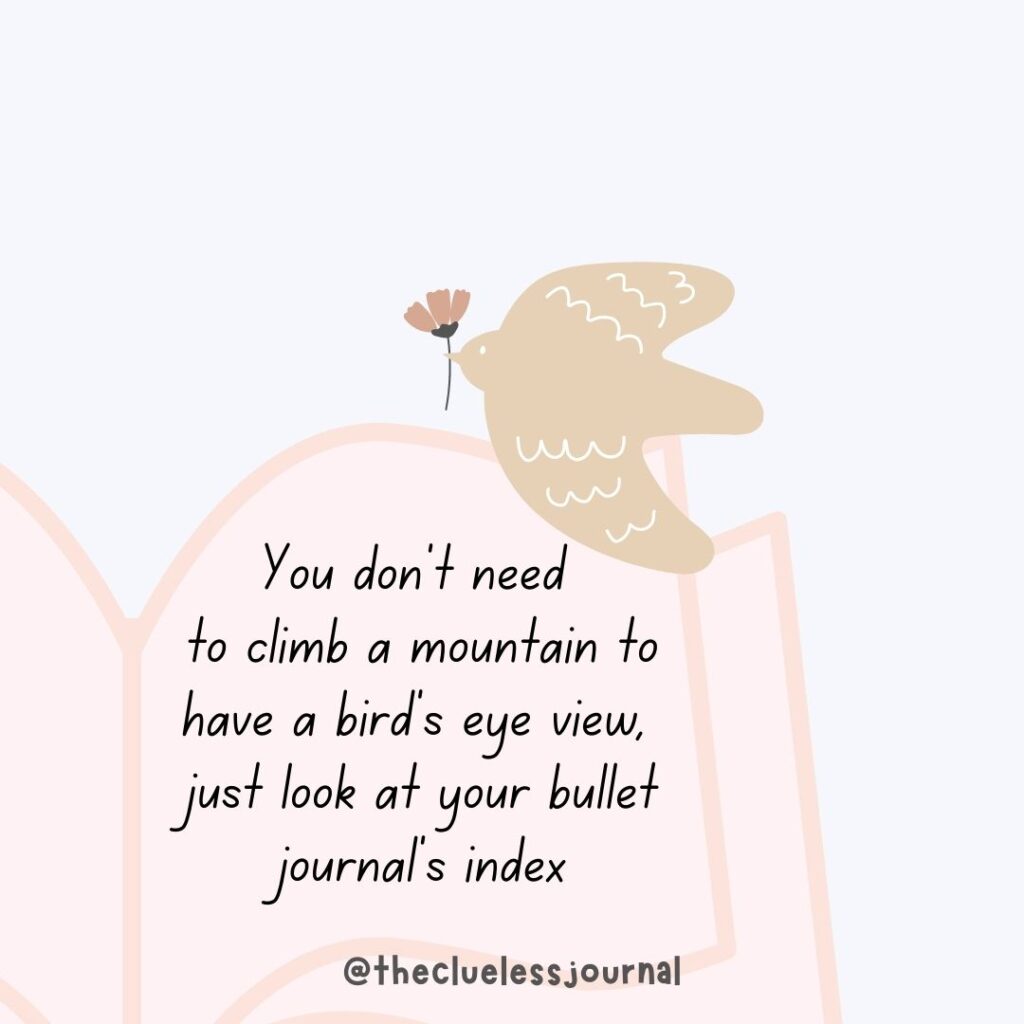
Catalogue System
Think of this as the universal bullet journal language.
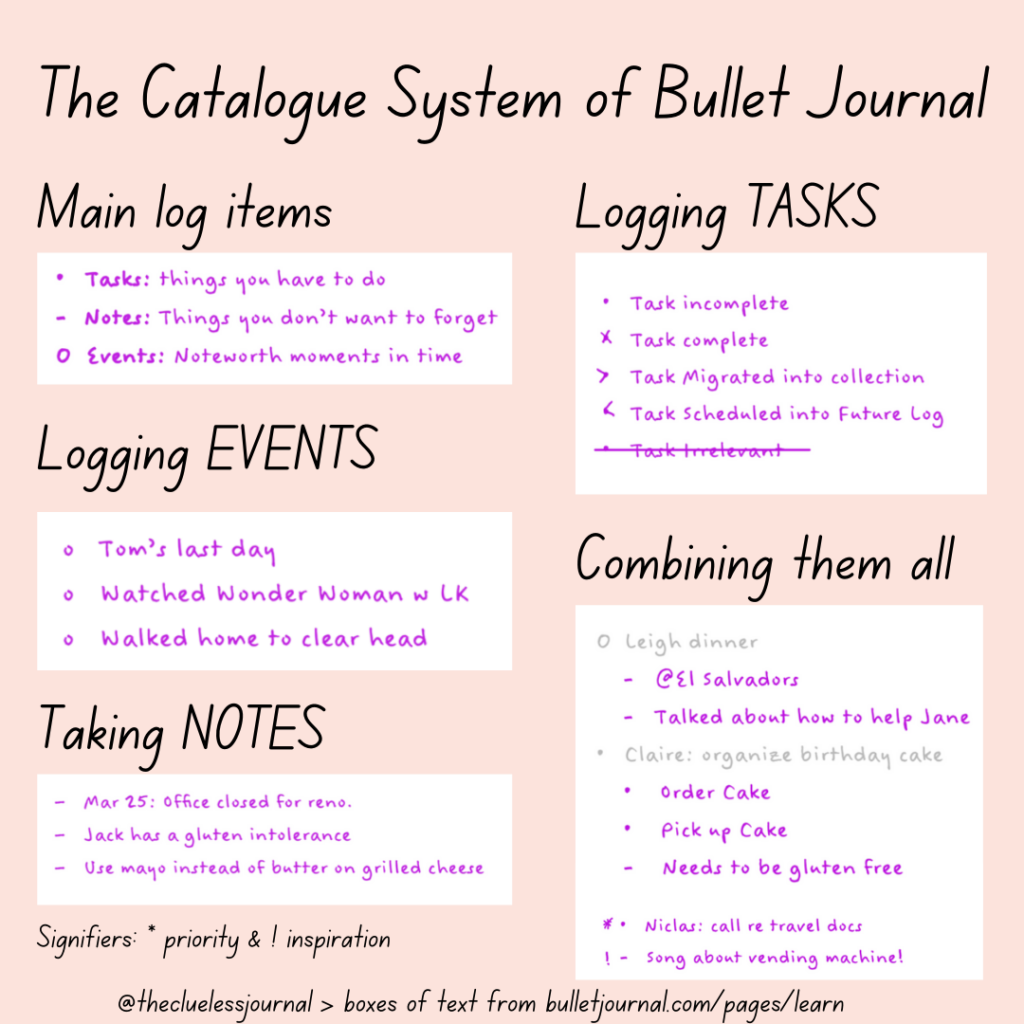
Monthly Log
Your monthly log will contain the key events and tasks to be completed.
Ask yourself WHY does this task warrant being done?
If it is a task that has been migrated from the previous month, you have to ask why it didn’t get done previously. It is possible that the task is no longer relevant or you are no longer passionate about it. If so, strike it off.
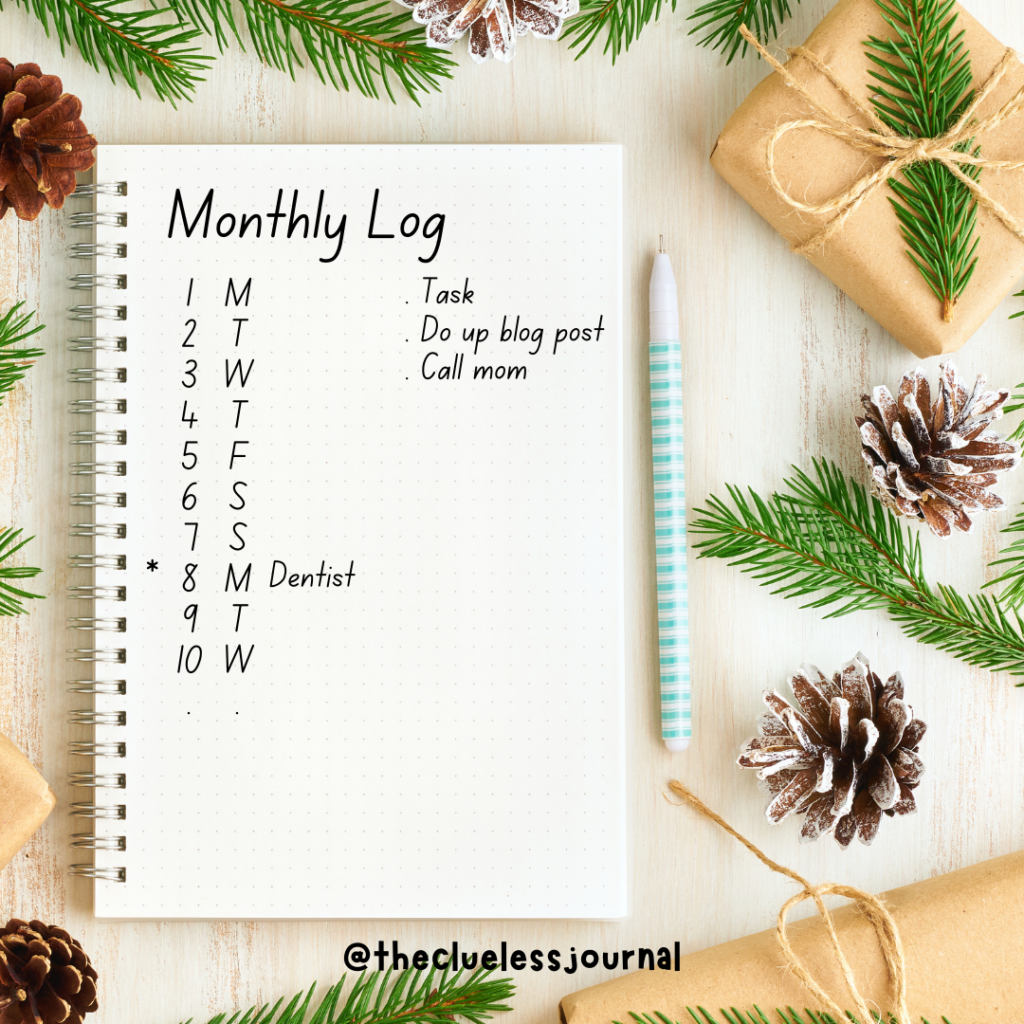
Future Log
Think of this as a dumping ground for all things you want to work on in the future, defined as after the current month. At the end of the month, you can decide whether to tackle some of these tasks in the following month OR keep it in the future log OR delete it.
Goals Collection
There is a whole chapter dedicated to tackling goals in The Bullet Journal Method book. My biggest takeaways are:
- Intentionality behind WHY this goal?
- If you have a project, you may brainstorm a whole list of sub-goals
- Depending on how major these sub-goals are, you can choose one to tackle within the time frame of 5 years, 4 months, 3 weeks, 2 days or 1 hour.
- If a certain goal is actually a PROJECT, then start a project collection and break the project into separate tasks, ideally manageable bite-sized ones. This reduces the chance that you get stuck in one and abandon the whole project 😛
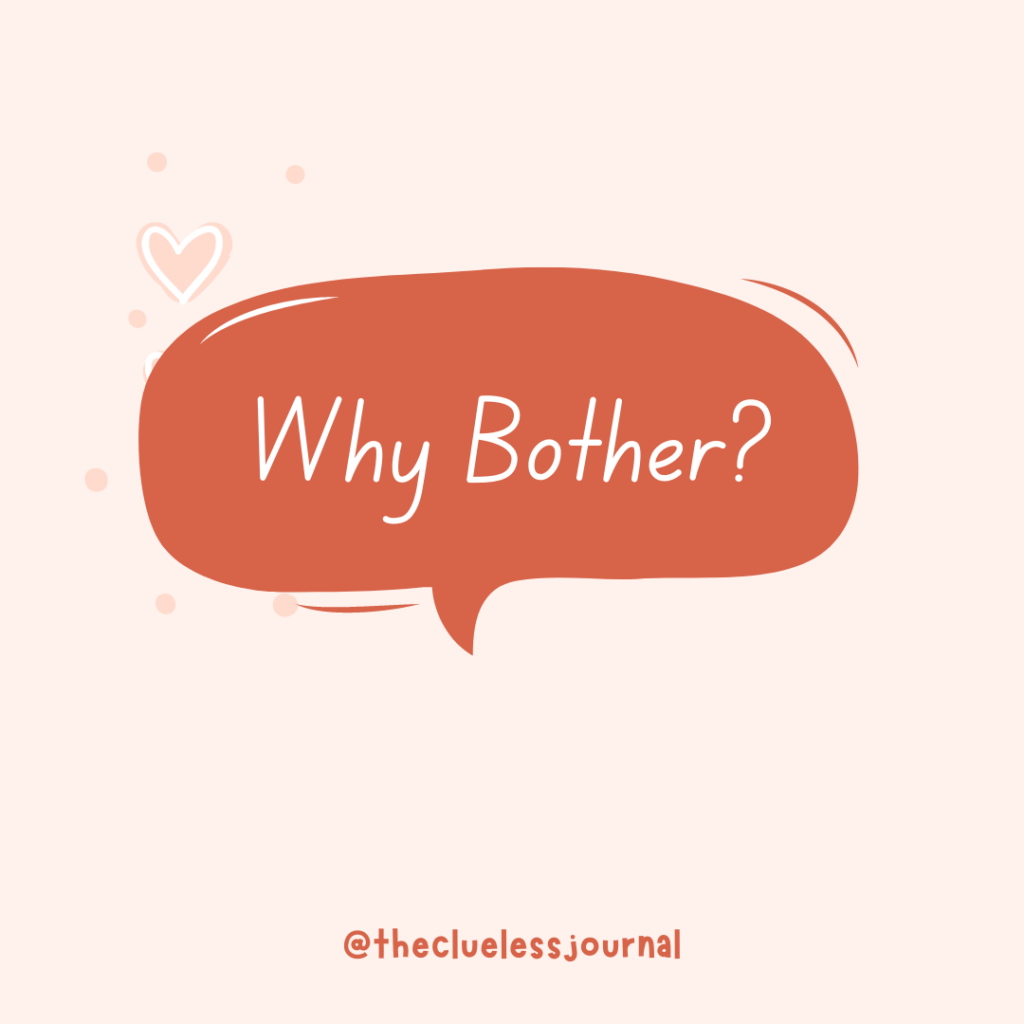
Migration
Migration simply means moving the tasks from a particular page to another.
- From the uncompleted task in today’s log to the next day
- It may also be moving the task from the day/month log to future log – denote with > [task] in the day/month log
- It may also be moving from the future log to the month log – denote with < [task] in the future log to show it has been scheduled!
3 key migration timing – end of day, end of month, end of year. Migration is really a time for reflections, don’t miss that.
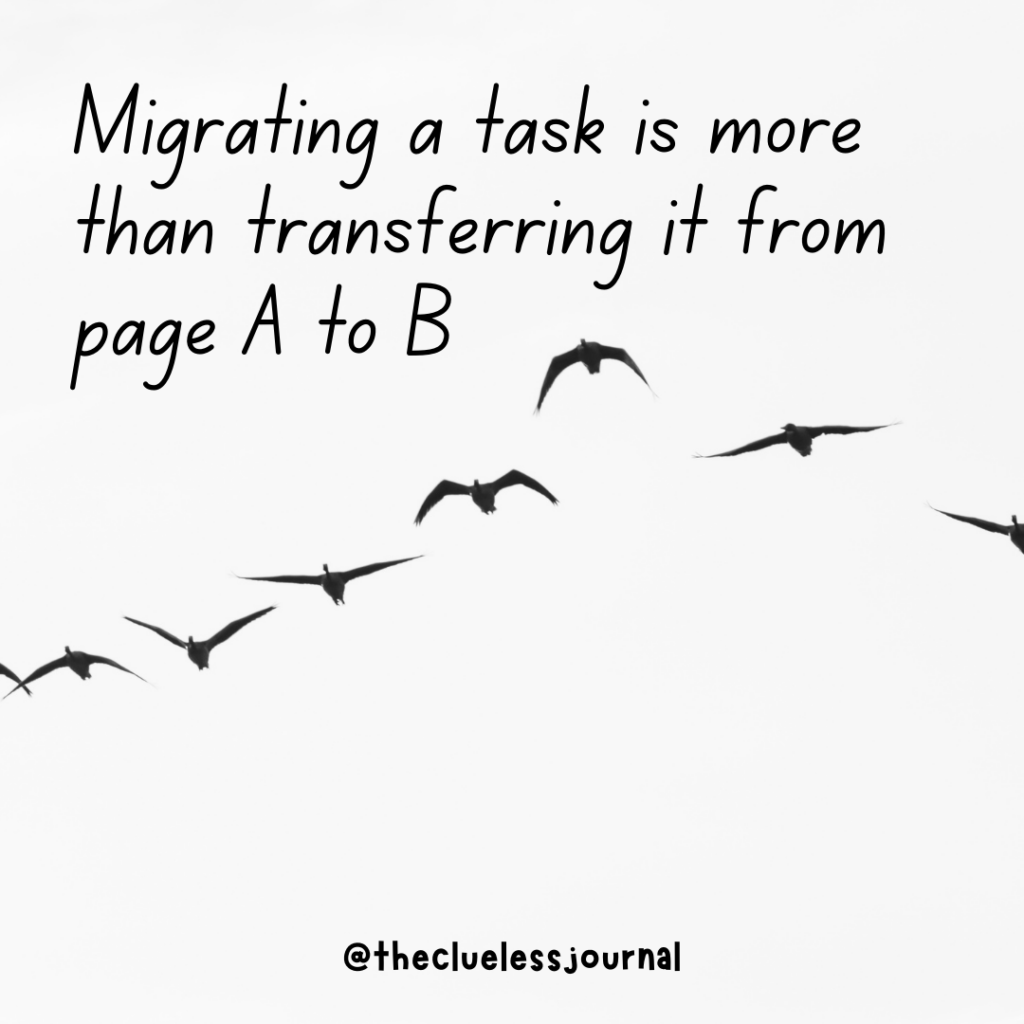
Threading
It is useful when you need to refer across more than one journal notebook OR you run out of space to write and have to write more behind in the same journal.
The system used for threading is:
30/6 – 30 refers to the current page number/ 6 to the previous page number for the same topic
If you are threading across journal notebooks, be sure to include the volume of the journal e.g. BuJo#1, 50/30 (current journal page)
DON’T FORGET TO INDEX THE THREADNG
Now the FUN part: Retail Therapy!!
Books about Bullet Journaling
I have read The Bullet Journal Method, Beyond Bullets, Creative Journaling & How to Bullet Plan. If anyone is interested in a blog post on it, let me know in the comments!
Bullet Journaling Notebooks
It may be more convenient to use a dotted grid notebook that is page-numbered, but there’s really no rule as to what works for your bullet journal.
Since I started on Instagram, I’ve made a few friends and love the passion that they put into their products. While I haven’t bought from them (due to international delivery), I just want to give a shout-out.
p.s. other than links to Amazon, I do not get any commission, free products from linking to these friends. Well, I supposed I gain treasure in heaven, xo
Cute Little Bird Journal Handbound with 200 Unlined Pages
The notebook is completely handmade, from the folding of the pages, to the hand sewn spine, to the glue which is made in house from my own personal recipe based on traditional bookbinding techniques.
WoodCraft-Creations

I use the refillable Filofax for capturing boring stuff and prayers. Instead of migrating journal, I simply take the used pages out! I use the Rhodia for gratitude journaling and a standard journal notebook for all things related to this journaling site, Clueless Journal.
Journaling Supplies

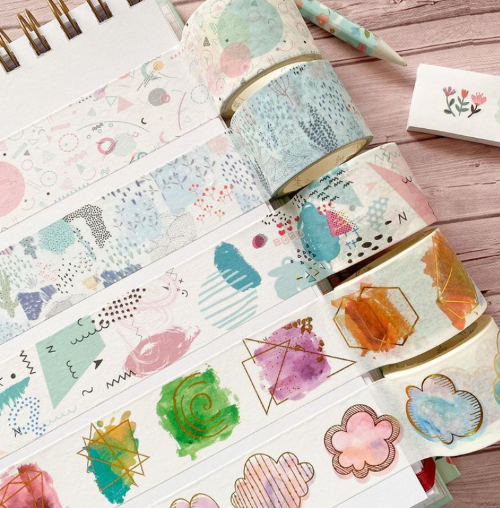


To be inspired on what to journal, check out The What & How of Journaling – 3 Ways to Kickstart your Journaling Habit.
The Clueless Journal Gang
If you follow my Instagram, you will see that I love creating motivational quotes. This one is a popular one and it is inspired by a boss babe podcast which Steven Bartlett said that he believes that he can achieve whatever he set his mind on.
I think that’s HUGE. If we don’t believe we can, we will not try wholeheartedly.
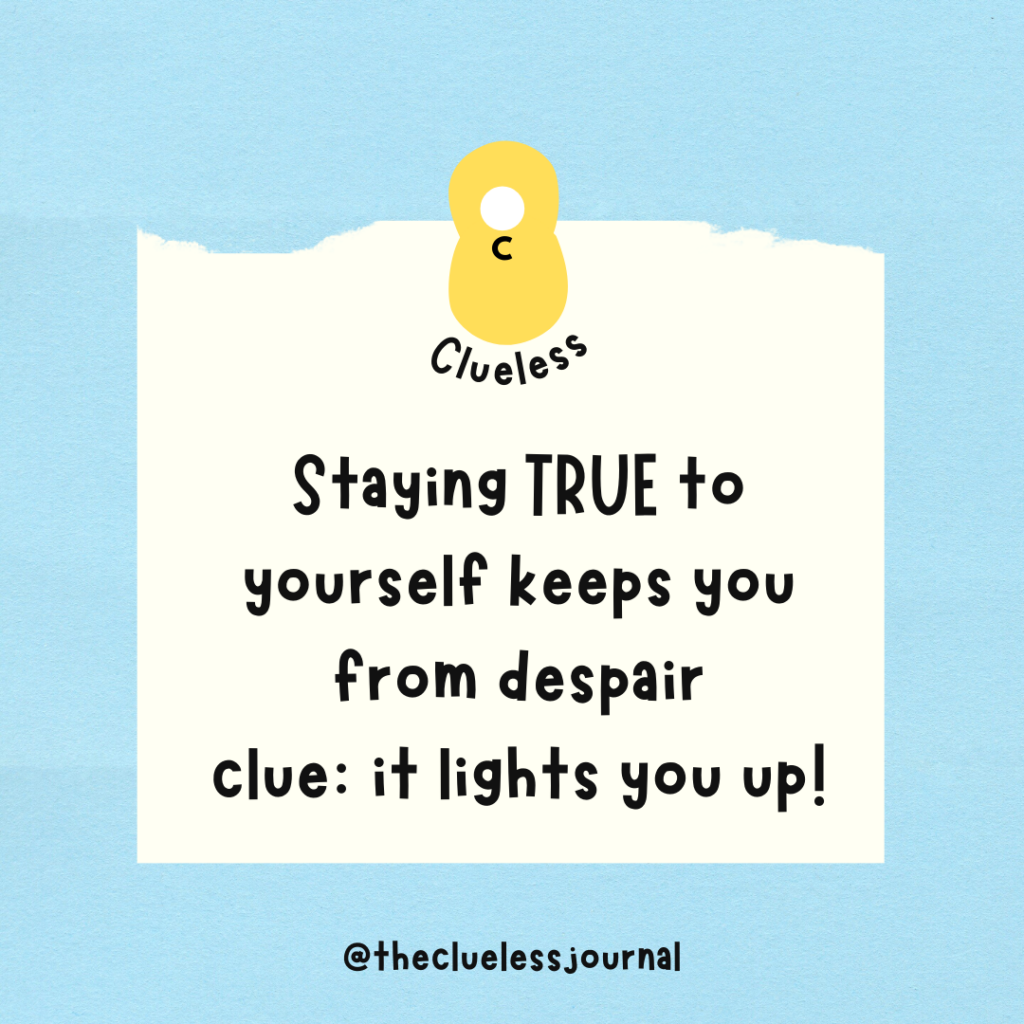
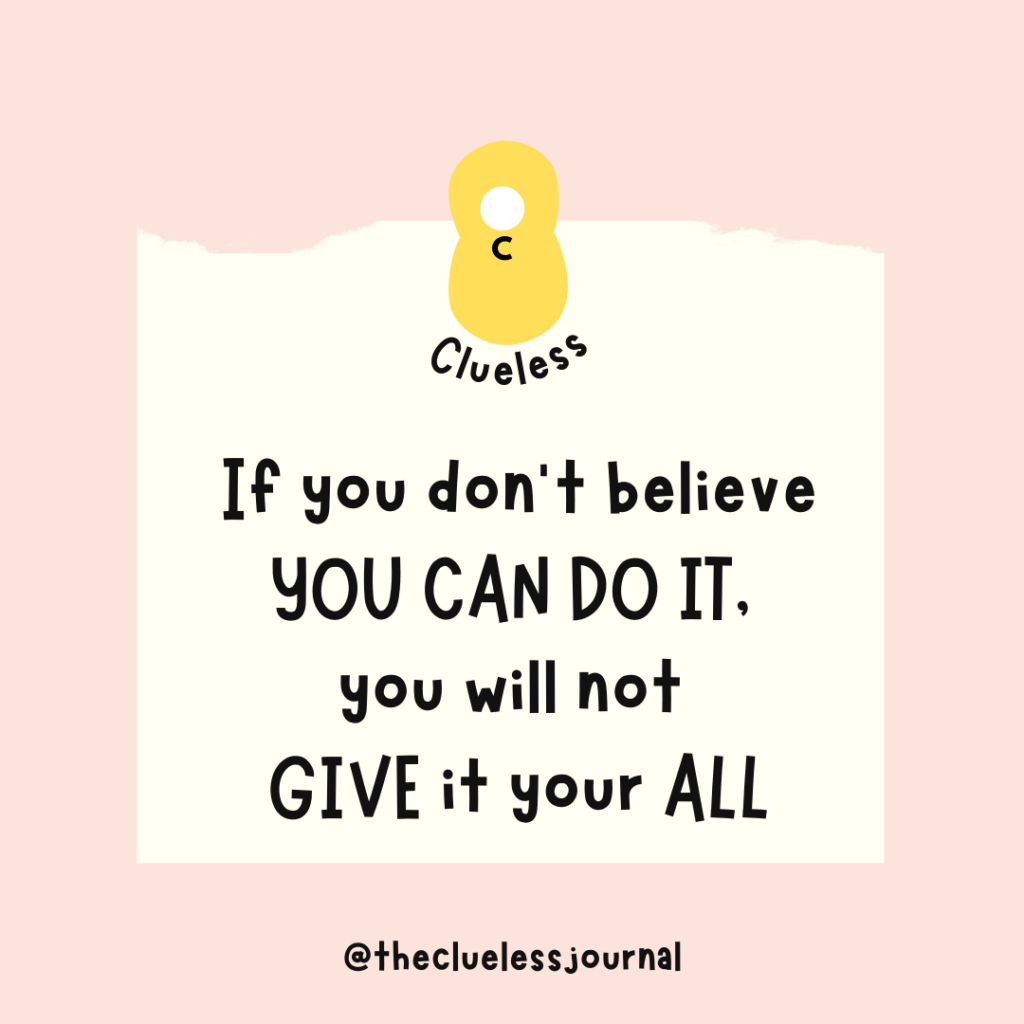
References:
- Carroll, Ryder (2018) The Bullet Journal Method: Track the Past, Order the Present, Design the Future. Portfolio/Penguin, an imprint of Penguin Random House LLC
- Bullet Journal, Lightcage LLC https://bulletjournal.com/ Accessed 8 June 2021













